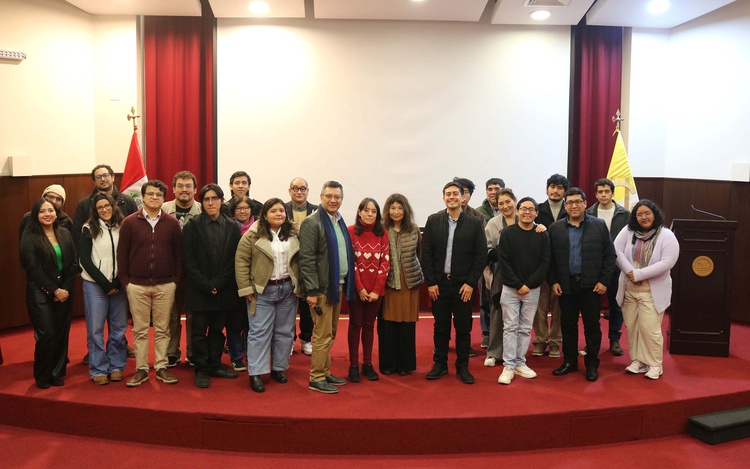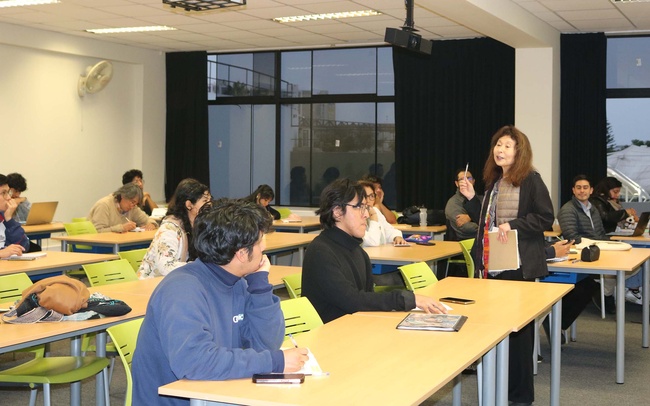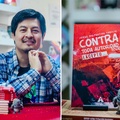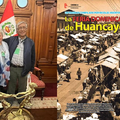
Behind all art is a science, a method, and a concept that helps us see the creator of a work. Often, this work responds to the personal, intimate, and instinctive impulses of that individual. But other times, it is a creative exercise, a reflective attempt, and a challenge to study something, someone, or a place. In 2024, a group of 25 Peruvians interested in Japan took a course with a clear goal: to produce artistic or intellectual content that would connect them to that country.
The event took place at the Center for Oriental Studies at the Pontifical Catholic University of Peru. The topic was contemporary Japanese culture. The professor was Dr. Satomi Miura from the Colegio de México. The objective: to broaden and enrich the understanding of contemporary Japanese culture, drawing on specialized knowledge of cultural and artistic expressions from recent decades, demonstrating their interconnectedness and relevance on the international scene.

Behind all art is a science, a method, and a concept that helps us see the creator of a work. Often, this work responds to the personal, intimate, and instinctive impulses of that individual. But other times, it is a creative exercise, a reflective essay, and a challenge to study something, someone, or a place. In 2024, a group of Peruvians interested in Japan took a course with a clear goal: to produce artistic or intellectual content that would connect them to that country.
Alonso Belaúnde Degregori, a professor at the Center for Oriental Studies, explains that this course was made possible thanks to the support of the Japan Foundation's Japanese Studies Project Incentive Program. Throughout ten intensive learning sessions, the goal was to foster the incorporation of these artistic ideas into the students' creative imagination. Their artistic products can be found on the institution's website.
Art and reflection
Masaru Chinen Higa studied philosophy and teaches at the elementary level. He was one of the 18 participants who chose to produce an academic essay entitled "Nikkei Art and Identity." Other participants chose film topics, ranging from Godzilla to the work of Akira Kurosawa, while others focused on anime, Butoh dance, haiku, or the writer Yukio Mishima for their essays.
“From a very young age, my relationship with the art world has been very close. This, combined with certain traits of my personality, has shaped an unwavering loyalty to my classic artistic preferences to this day,” Masaru writes. “The PUCP proposal was an ideal opportunity to broaden my vision of contemporary art, as it was the first time I had access to classes focused on a region that has always fascinated me.”
Okinawan culture has always been connected to Daniel, through both his parents and grandparents, who celebrated the main rituals and instilled in him the traditions and values of their ancestors. “Last year, I had the good fortune to be selected as a Kitanakagusuku scholarship recipient, with a two-month stay in Okinawa. From the moment I stepped off the plane, everything felt strangely familiar: Diamantes was playing at the airport, the social atmosphere was warm, the cuisine and traditions were the same as back home. At every moment, I remembered my oji.”
This experience of self-discovery was key to his interest in a course that helped him overcome a challenge: that of observing the artistic product from a third person. "It's not possible to criticize or appreciate a work from the outside; a direct relationship with it is necessary." With this in mind, he attended exhibitions and spoke with the artists to learn about their motivations and aspirations. The result is an essay with references to Nikkei identity and Japanese immigration to Peru.
Creative look
Ana Sofía Villanueva Imafuku is a graphic designer and illustrator. She has participated in solo and group exhibitions that include murals. “I was intrigued by Japan's recent history through its cultural production and by connecting the agricultural Japan of my great-grandparents with the cultural phenomenon of modern Japan. Drawing on the interdisciplinary nature of the course, I was able to map out processes and prominent figures in literature, film, and the performing arts,” says Ana Sofía.
It was a way to enrich her artistic practice within a personal and intimate discourse. “The most challenging thing was transferring ideas from disciplines other than the visual arts and choosing where to situate my project. In this case, I leaned toward documentary and weaving together fragments of stories captured through paper and India ink to narrate a climate of familial nostalgia.” Her work was titled “An Instant Could Be Infinite. A Visual Essay on Everyday Family Life . ”

For Ana Sofía, being Nikkei is part of her identity as a Peruvian and influences how she observes and understands her surroundings. “It's also in my visual language, perhaps in my predilection for using India ink, gesture, and the idea of capturing the emotion of a moment through synthesis and agile strokes,” says the artist, who participated in the 4th Nikkei Young Art Salon, which influenced her artistic work. On a family level, she was shaped by the story of her great-grandfather, Dairoku Imafuku, one of the first presidents of the Kumamoto Kenjinkai, and that of her aunt Rosa, who took on the role of “caretaker” of Nikkei culture in her family.
Second look
Marlene Merino Montani works at the La Unión Educational Services Cooperative, a Nikkei institution focused on educational services for Nikkei culture and language. When they received the invitation from PUCP in 2023, she couldn't participate. However, a coworker did, and she arrived after each class excited about what she had learned. This motivated her to participate the following year, despite not being Nikkei.
“The most challenging thing was realizing I didn't have much knowledge of Japanese culture at the artistic level. Being in class and seeing so many students with a deep understanding of art overwhelmed me at first, but it also excited me because I was gaining valuable information to share with my classmates.” To present her artistic proposal, she looked for something she could identify with, something that was socially and objectively relevant to Japanese society.
The choice was a manga by Waka Hirako ("My Broken Mariko"), which was turned into an award-winning film that addresses the role of women in Japanese society. There, she found her starting point, complemented by her relationship with a community where she has encountered many interesting stories, with a series of values and customs that have led her to admire them and also to identify patterns that place women in a questionable role.
Life for art
The twenty works presented for this course show a thematic diversity that is astonishing due to the cultural and historical connection between Peru and Japan. Peruvian popular music, haiku, the diablada mask (Andean dance), and origami are just some of a list that includes several creators from both countries: Yasuzō Nojima, Katsue Kitazono, Eulogio Nishiyama, and others. The relationship between art and this group of Peruvians also demonstrates how art permeates life.
Masaru Chinen says he met Professor Ignacio López-Calvo in a Latin American Philosophy class and, thanks to his bibliographic support, was able to understand how little Nikkei know about themselves. “Nikkeiness is a phenomenon experienced differently by each person: circumstances shape each individual's identity.” With this perspective in mind, he analyzed the processes of self-representation in the work of various Nikkei artists such as Narumi Ogusuku, Germán Chinen, and Augusto Higa.
Ana Sofía Villanueva Imafuku found in this feminine role as a transmitter of an identity heritage a motivation to create. As a result, she presented, in early 2024, the solo exhibition "A Dynasty of Flowers" at the Peruvian-Japanese Cultural Center. The common thread lies in the connection between the choice of names for women in her family and their role as caretakers of material and cultural life in Nikkei homes.
From a different perspective, Marlene Merino feels Nikkei at heart. “I work with many of them, and in some ways, I've blended into some of their customs. My relationship with Nikkei began with friends we all truly have, whom we love and respect for their sincere friendship and values. Art, a vehicle for various designs, is there to convey the emotions and interests of whoever desires it.”
Note:
1. Ana Sofía Villanueva Imafuku, “An instant could be infinite: A visual essay on everyday family life” in the Artistic-Academic Presentations of the course “Contemporary Japanese Culture” on Thursday, June 27 (YouTube)
© 2025 Javier García Wong-Kit










